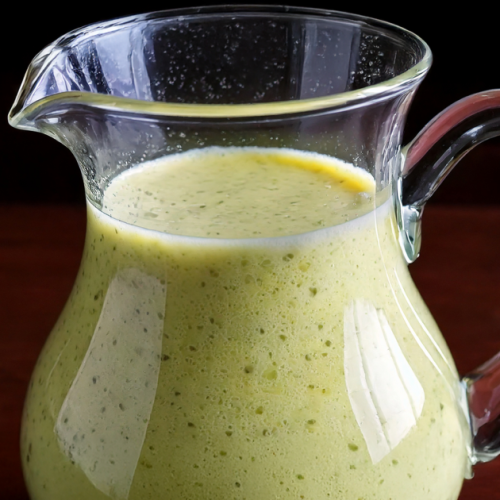Lebanese salad dressing offers a harmonious blend of Mediterranean flavors. This condiment is a perfect alternative if Syrian dressing isn’t quite your thing but you’re still craving vibrant Middle Eastern tastes.
Contents
Lebanese salad dressing recipe
Lebanese salad dressing is a staple in Mediterranean and Middle Eastern cuisine. The salad dressing combines olive oil, lemon juice, and garlic for a distinctive tangy and aromatic profile. Unlike heavy Western dressings, Lebanese dressing emphasizes freshness and natural ingredients.

I love how this dressing adds a burst of flavor without overwhelming the dish. It’s a perfect choice for a bright, Mediterranean-inspired meal. It’s perfect for grilled meats like lamb, chicken, or beef, and gives roasted veggies like eggplant or zucchini a fresh twist.
You can also use it as a dip for warm pita or flatbreads, or drizzle it over rice dishes like pilaf. It brings out the flavors in falafel wraps, shawarma, or even stuffed grape leaves.
It’s a must-have in salads like tabbouleh and fattoush and works great as a quick upgrade to any green salad. Even kebabs get better with a Lebanese dressing on top!
Here’s how to make the Lebanese salad dressing:

Lebanese salad dressing
Nutrition
Ingredients
- 1/4 cup fresh lemon juice about 1 large lemon
- 1/4 cup extra virgin olive oil
- 2 cloves garlic minced
- 1 teaspoon Dijon mustard optional
- 1 teaspoon maple syrup (or honey) optional, for sweetness
- Salt and pepper to taste
- 1 tablespoon fresh parsley finely chopped (optional)
- 1 tablespoon fresh mint finely chopped (or sumac for a tangy note)
Instructions
- In a bowl, whisk together the lemon juice, minced garlic, and Dijon mustard (if using).
- Slowly drizzle in the olive oil while whisking continuously until the mixture is well combined and emulsified.
- Stir in the honey or maple syrup if you prefer a touch of sweetness.
- Season with salt and pepper to taste.
- If desired, add the chopped parsley and mint for extra freshness and flavor. (Or use sumac for a tangy note)
- Serve immediately or refrigerate in an airtight container for up to a week.
Notes
- 1/2 cup of dressing is enough for about 4-6 servings (depending on how much dressing you like on your salad).
- Keep in an airtight container in the refrigerator for up to a week. If the olive oil solidifies when chilled, let it sit at room temperature until it liquefies again before use.
Variations
Here are some other variations of Lebanese salad dressing:
- Ground Sumac Version imparts a citrusy flavor that enhances the lemon juice. It’s a staple in both the dressing and as a garnish.
- Pomegranate Molasse Adaptions adds sweetness and depth, balancing the acidity of lemon juice. It’s frequently found in dressings for Arabic salads and Fattoush.
- Fresh Herb Additions incorporate parsley or cilantro for a fresh dressing.
- Za’atar Version adds a blend of herbs such as sumac, thyme, and sesame seeds for an aromatic twist.




Very flavorful and taste amazing…I made the recipe exactly as stated but it came out runny-liquified unsure why it’s not as creamy as the picture looks. It’s so good I want to make it again! do you have any suggestions to make it thicker/creamy?
Hi Gina,
Happy you love the recipe. To make it creamy, you can add 2-3 tablespoons tahini or 1/4 to 1/2 cup of plain yogurt. Just add 1 tbsp at a time to reach the creamy level you need.